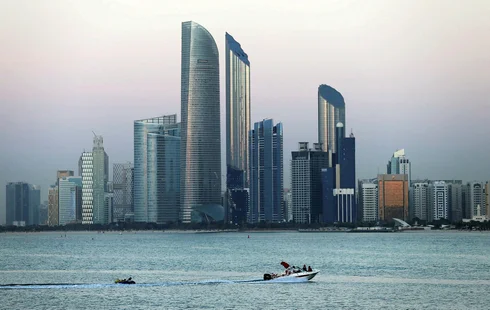T. Belman. “Tiny Qatar Casts a Giant Shadow and is Our Enemy”
Qatar is believed to have spent more than $250 billion on the World Cup, but its boundless investments in Western hotels, universities, museums and sports teams already make it a power

Japanese fans in Doha, Qatar, for their team’s game against Germany on Wednesday.Credit: Molly Darlington/Reuters
To judge by the furious reactions to Qatar’s decision to ban the sale of alcoholic beverages at soccer stadiums, you’d think we were talking about another serious human rights violation.
Democracy? Women’s rights? Freedom of expression? The thousands of migrant construction workers who died in the run-up to the World Cup? All this pales in comparison to this Muslim country’s abomination in preventing hundreds of thousands of fans from enjoying soccer the way it’s supposed to be enjoyed.
But let’s relax for a second. After all, anybody who absolutely must drink alcohol while watching a match can do so in a private box for a suitable fee.
Such a seat in the group stage only costs between $950 and $4,950, while the “hospitality package” for the semifinal and final costs up to $34,000. Hey, this includes a lavish six-course meal.
It’s unclear how much of the proceeds Qatar will collect, but they certainly couldn’t cover a tenth of the investment the country has put into the World Cup, the most expensive one in history.
It’s widely believed that over the past 12 years, since Qatar won the right to host the tournament, this small country whose citizens enjoy the world’s highest living standards has invested more than $250 billion in the event. All this has gone for a new airport, an upgraded metro system, a hundred hotels, new roads and of course eight air-conditioned stadiums to quiet the clamor about holding the tournament in the middle of a desert.
But this isn’t an investment measured in costs versus profits. Until three years ago, Qatar expected the World Cup to bring a $20 billion profit, but in recent weeks optimists are saying that $10 billion would be good, with realists capping the number at $8 billion.
Nor are big profits forecast for the future. Qatar will keep three of the eight stadiums for international competitions it hopes to host, while the other five it plans to tear down. Many hotels with their thousands of well-appointed rooms are likely to remain empty, or with demand not justifying the maintenance costs.
- World Cup kickoff: summing up a great week for Middle East dictators
- Qatar is kicking human rights out of football
- World Cup 2022: Why Qatar protests are justified – and hypocritical
Like other Gulf states, Qatar has a vision for 2030. The 40-page document, drawn up in 2008 under then-crown prince and current ruler Sheikh Tamim bin Hamad al Thani, is replete with lofty rhetoric and futuristic ideas. It calls for economic development, progress, modernization and the boosting of higher education while preserving traditional values.

The skyline of Abu Dhabi, the capital of the United Arab Emirates. Some tourists fly to Qatar to skirt the exorbitant hotel prices.Credit: Hamad I Mohammed/Reuters
But no detailed plans or timetables are included. Qatar’s leaders sometimes talk about diversifying the country’s revenue sources, expanding the tourism industry or reducing the foreign workforce that makes up about 90 percent of the population, but this is all talk.
Qatar can’t do without its foreign workers just as it can’t suddenly turn itself into a tourist attraction or a center of international trade like the United Arab Emirates. With Saudi Arabia dominating in hosting car-racing and bodybuilding competitions, and the UAE dominating in horse racing, not much is left for Qatar.
And honestly, Qatar is a pretty charmless place. Its aggressive ad campaign starting next month after the World Cup ends will show off different sides of the country: its perfect beaches, opulent hotels, prime sandboarding conditions and desert safaris. The aim is to attract 6 million tourists by 2030.
This is a very ambitious goal considering the 1 million tourists who visited Qatar last year, compared with the UAE’s 10 million tourists so far this year. In fact, because of the World Cup, the UAE has been enjoying a strong influx of tourism. Many visitors are opting to stay in hotels in Abu Dhabi or Dubai and fly the hour or so to Qatar’s capital, Doha, rather than pay Qatar’s exorbitant hotel prices.
At the start of the year Iran, which sits across the Persian Gulf, also hoped to attract World Cup tourists and proposed the crafting of a joint tourism plan with Qatar. Tehran even agreed to forgo the visa requirement for World Cup visitors.
But the plan didn’t go anywhere, and not only because of Western tourists’ wariness about Iran. Iran didn’t finish construction of an airport on its Kish Island, and it didn’t increase the number of ferries connecting Iran and Doha.
For Qatar, hosting the World Cup is all about its prestige as the first Arab country to achieve a given feat. After all, it beat out oil giant Saudi Arabia and international-trade hub UAE.
But therein lies the paradox. Qatar doesn’t need the World Cup to gain international standing. Its has solid ties with the United States and Europe, marked by boundless investments in hotels, universities, museums and sports teams that have transformed it from an oil-and-gas giant into a diplomatic power.
This week it received a huge pat on the back from U.S. Secretary of State Antony Blinken, who was in Doha to watch the American team play Wales. He praised Qatar’s contribution to regional security and commended the country for its aid to countries in the region including Lebanon, to which it has sent millions to pay military salaries.
This week Qatar also received Israel’s authorization to join the consortium that includes France’s TotalEnergies and Italy’s Eni to drill for gas at Lebanon’s Qana field offshore.
Qataris don’t have to wait for an influx of tourists to put a few more dollars in their pockets. Annual per capita income tops $120,000, retirees are entitled to a minimum pension of $4,000 per month, education and health care are free at every level, and young couples receive plots of land and cheap loans to build homes.
To obtain Qatari citizenship, you have to have either a Qatari father or have lived in the country continuously for 20 years (and in the latter case, citizenship isn’t automatic). The restrictions have kept the number of citizens very stable, and the extensive benefits they receive discourage them from seeking training that would suit the demands of the modern job market.
So Qatar, like Saudi Arabia and Kuwait, will remain dependent on foreign workers at all levels for years to come.



Better this than funding terrorism and Islamism.
Even-tough they do both.
Illegals are better treated in the West! To some extent.